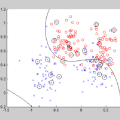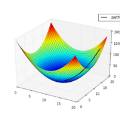Classifier guidance -- using the gradients of an image classifier to steer the generations of a diffusion model -- has the potential to dramatically expand the creative control over image generation and editing. However, currently classifier guidance requires either training new noise-aware models to obtain accurate gradients or using a one-step denoising approximation of the final generation, which leads to misaligned gradients and sub-optimal control. We highlight this approximation's shortcomings and propose a novel guidance method: Direct Optimization of Diffusion Latents (DOODL), which enables plug-and-play guidance by optimizing diffusion latents w.r.t. the gradients of a pre-trained classifier on the true generated pixels, using an invertible diffusion process to achieve memory-efficient backpropagation. Showcasing the potential of more precise guidance, DOODL outperforms one-step classifier guidance on computational and human evaluation metrics across different forms of guidance: using CLIP guidance to improve generations of complex prompts from DrawBench, using fine-grained visual classifiers to expand the vocabulary of Stable Diffusion, enabling image-conditioned generation with a CLIP visual encoder, and improving image aesthetics using an aesthetic scoring network.
翻译:分类器引导——利用图像分类器的梯度来引导扩散模型的生成和编辑,有潜力极大地扩展图像生成和编辑的创造性控制。然而,目前分类器引导需要训练新的噪声感知模型以获得精确的梯度,或者使用一步去噪的逼近方法来得到最终生成的梯度,这导致梯度失配和次优的控制。我们强调了这种逼近方法的不足,并提出了一种新的引导方法:基于扩散潜在的直接优化(DOODL),它通过优化扩散潜在的方式,以获得在真实生成的像素上预先训练的分类器的梯度。使用可逆扩散过程实现内存有效的反向传播。展示了更精确引导的潜力,DOODL在不同形式的引导下(使用DrawBench复杂提示的CLIP引导,使用细粒度视觉分类器扩展稳定扩散的词汇,使用CLIP视觉编码器实现图像条件生成,并使用审美评分网络改善图像审美)在计算和人类评估指标上优于一步分类器引导方法。



